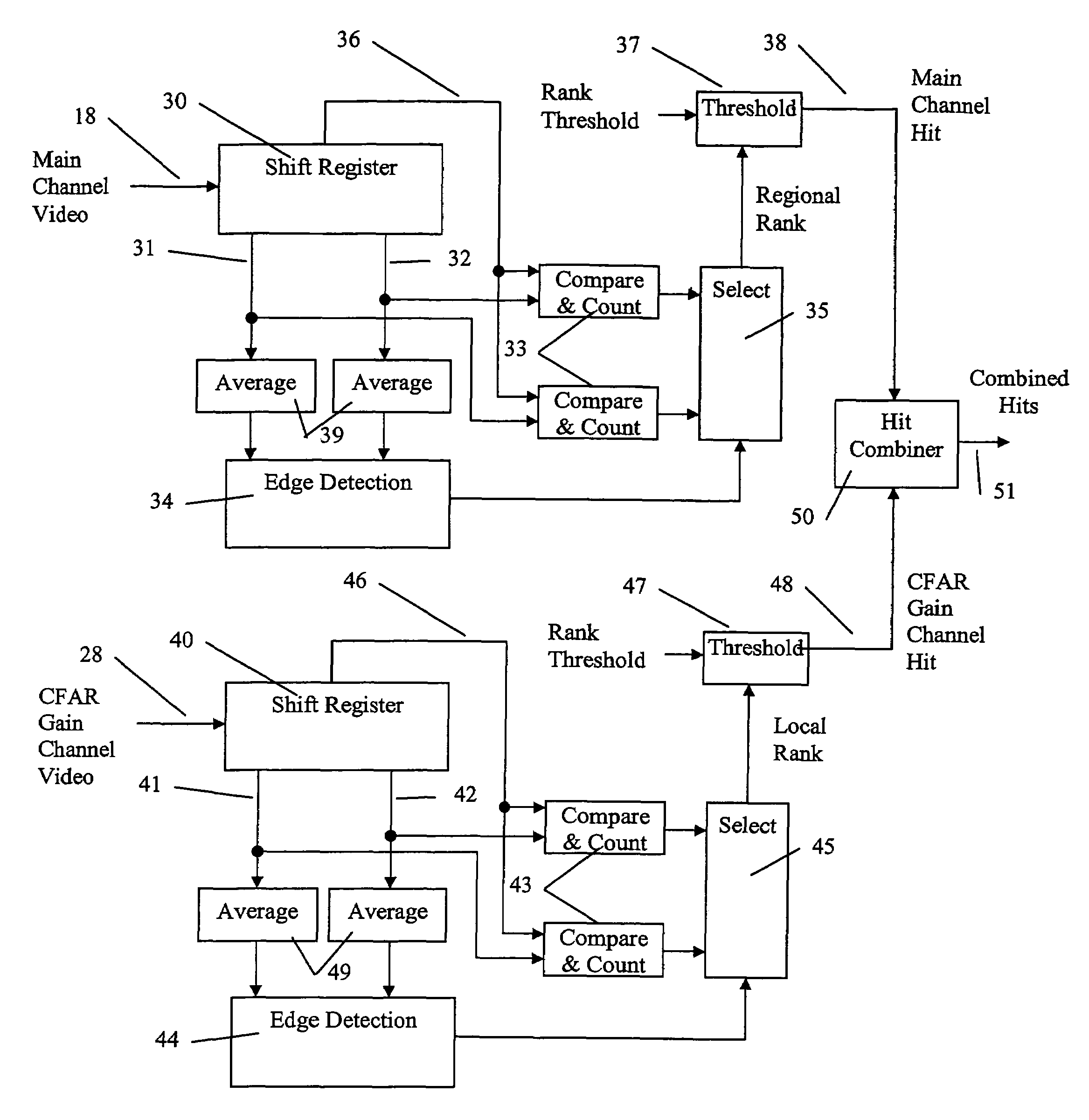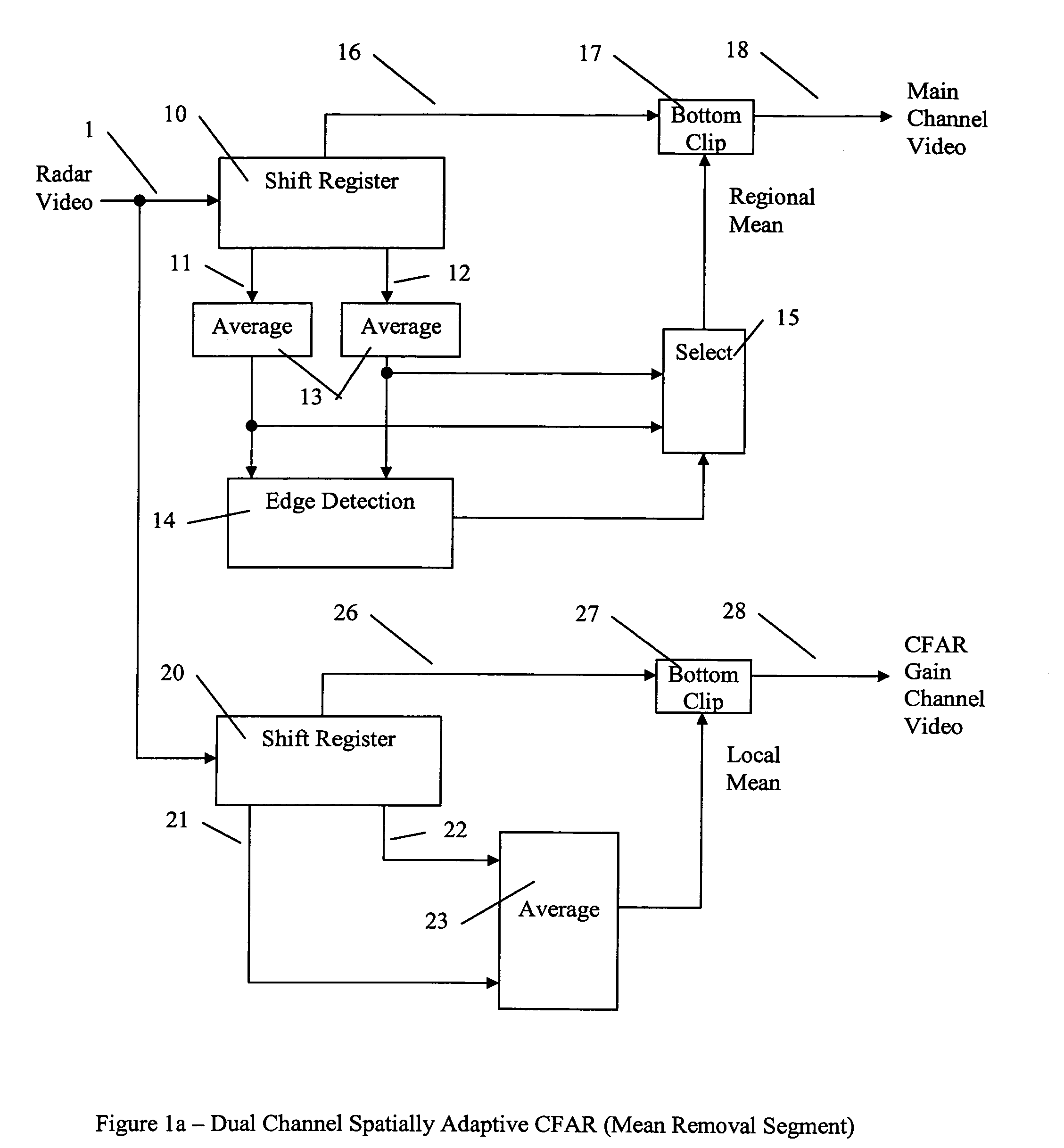Dual channel spatially adaptive CFAR
a spatial adaptive and dual channel technology, applied in the field of radar improvement, can solve the problem of achieve the effect of small impact on overall false alarm rate and low loss associated with parallel channels
- Summary
- Abstract
- Description
- Claims
- Application Information
AI Technical Summary
Benefits of technology
Problems solved by technology
Method used
Image
Examples
Embodiment Construction
[0019]The following is an example of one embodiment of the present invention. The following describes a method, system and apparatus for implementing CFAR gain in correlated sea clutter while maintaining low CFAR loss in uncorrelated background areas. The embodiment also maintains the ability to simultaneously detect large targets and small targets as well as detect anomalies in the background region caused by land returns and nearby target returns. The method is applicable towards a wide range of maritime surveillance radars as long as the range resolution is sufficiently small relative to the sea clutter spatial correlation.
[0020]An example of the present invention is illustrated in FIG. 1. FIG. 1 shows two parallel processing channels performed in XILFNX on the Signal Processor Interface (SPI) card. The input radar video signal 1 is applied to two or more shift registers 10 and 20. One shift register 10 is sized to cover a large regional area while a second shift register 20 is s...
PUM
 Login to View More
Login to View More Abstract
Description
Claims
Application Information
 Login to View More
Login to View More - R&D
- Intellectual Property
- Life Sciences
- Materials
- Tech Scout
- Unparalleled Data Quality
- Higher Quality Content
- 60% Fewer Hallucinations
Browse by: Latest US Patents, China's latest patents, Technical Efficacy Thesaurus, Application Domain, Technology Topic, Popular Technical Reports.
© 2025 PatSnap. All rights reserved.Legal|Privacy policy|Modern Slavery Act Transparency Statement|Sitemap|About US| Contact US: help@patsnap.com



